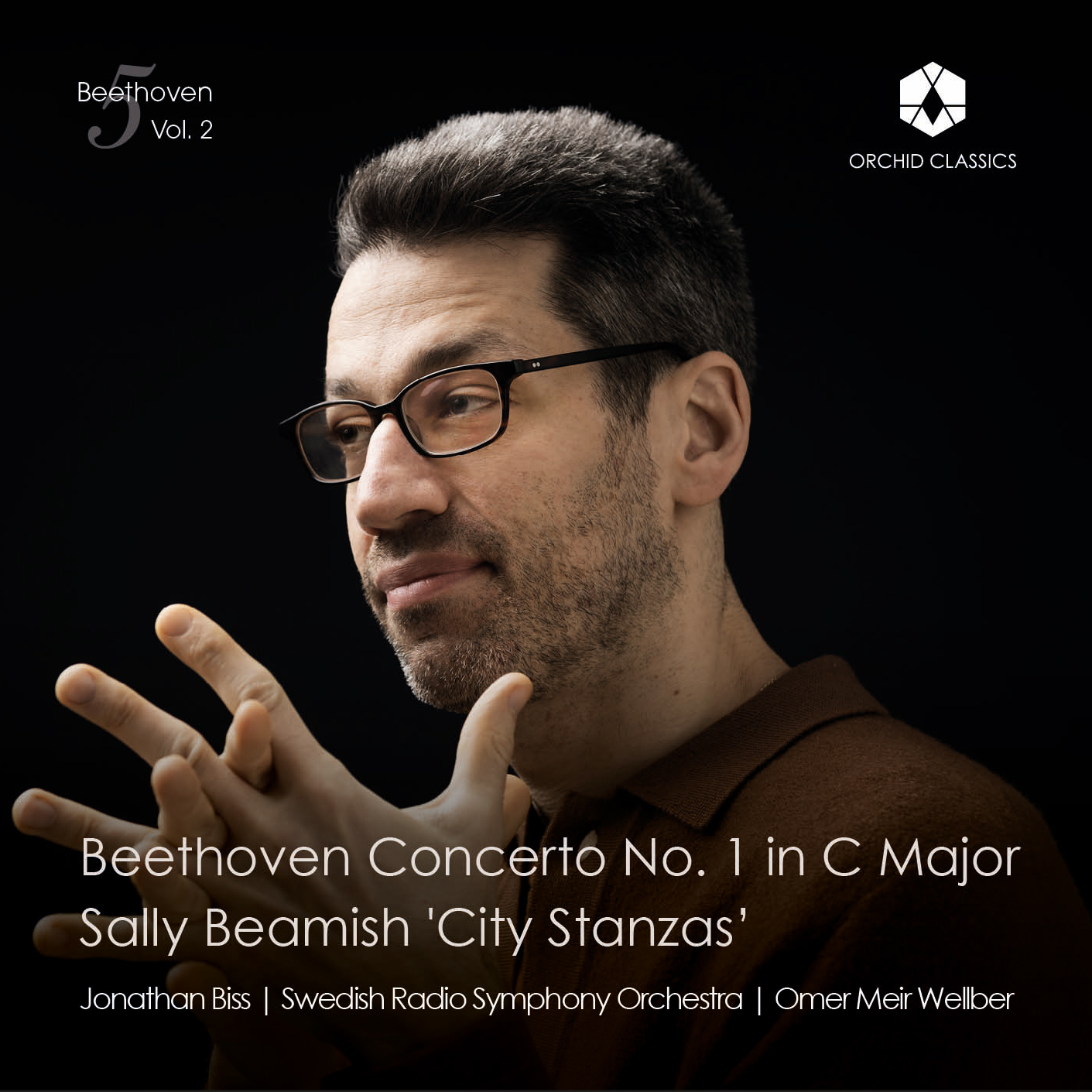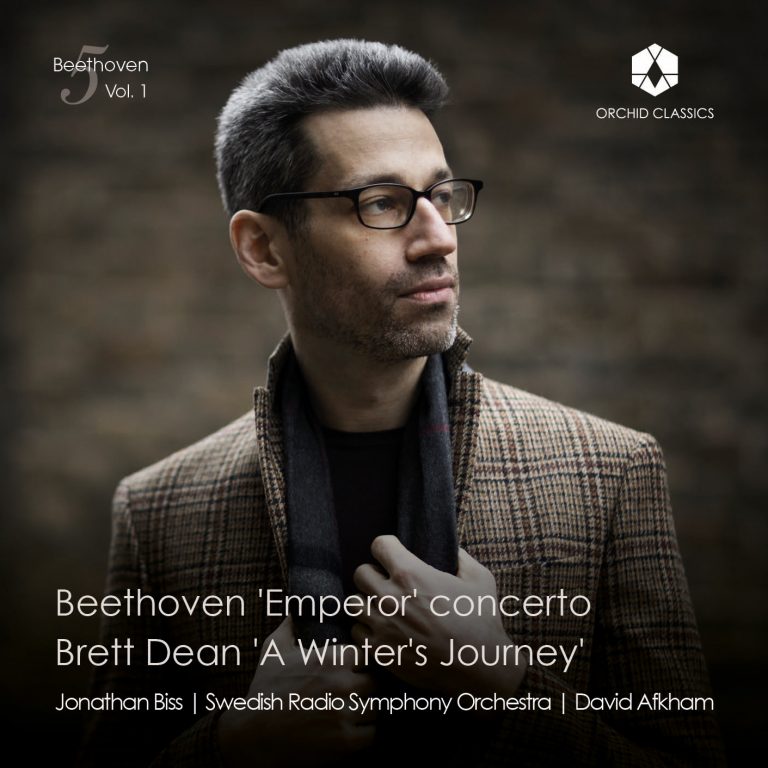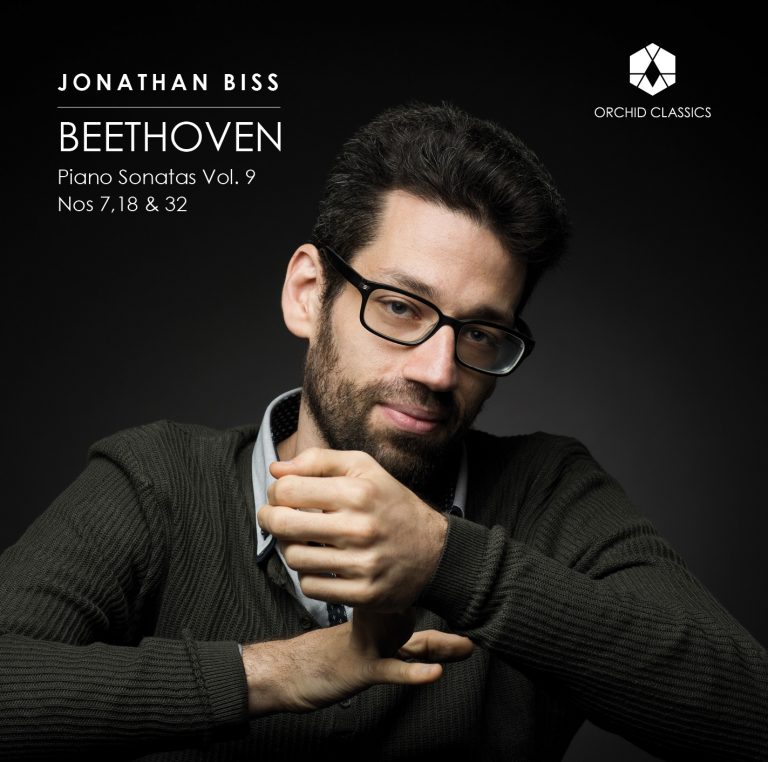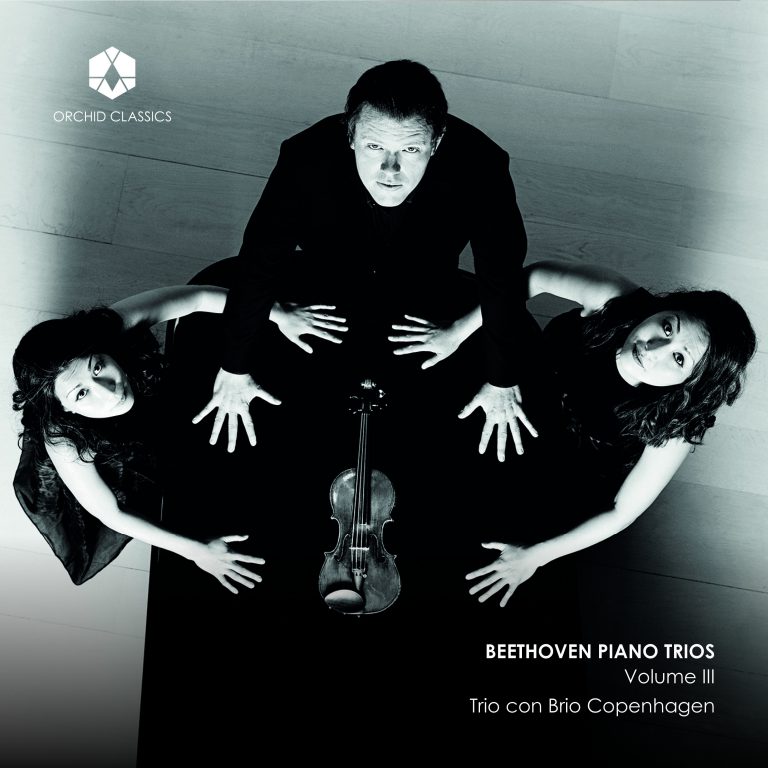Artist Led, Creatively Driven

Jonathan Biss
Beethoven/5 Vol.2
Ludwig van Beethoven
Piano Concerto No.1 in C major, Op.15
Sally Beamish
City Stanzas (Piano Concerto No.3)
Release Date: Oct 4th
ORC100339
BEETHOVEN/5 VOL. 2
Ludwig van Beethoven (1770-1827)
Piano Concerto No.1 in C major, Op.15
1. I Allegro con brio
2. II Largo
3. III Rondo: Allegro
Sally Beamish (b.1956)
City Stanzas (Piano Concerto No.3)
4. I Burlesque
5. II Requiem
6. III Rondo
Jonathan Biss, piano
Swedish Radio Symphony Orchestra
Omer Meir Wellber, conductor
Jonathan Biss on Beethoven’s Piano Concerto No.1
It’s rather amazing that anyone tried their hand at writing piano concertos when faced with the treasure trove that Mozart left behind; it’s completely amazing that Beethoven did so just a few years after Mozart’s death, and not only succeeded, but transformed the genre into something new and thrilling.
Mozart’s concerti are many things, but foremost, they are operas. Wordless operas, with the piano as protagonist, and each of the winds in a supporting but crucial role. These instruments are people, each with a unique personality and a unique set of motivations: they interact with one another, moving the action in unanticipated ways, influencing one another’s moods and deeds. Joy turns to jealousy, turns to regret, turns back to joy, sometimes all within one musical paragraph. Human beauty and human foolishness are on display; it is all totally illogical and absolutely convincing.
This is not how Beethoven’s piano concerti function. Nor is it how the piano concerto functioned after him; as with so many other genres, the changes he effected were so powerful they became permanent. Beethoven’s concerti are not conversations; fundamentally, they are confrontations, between an individual and an amassed force. The individual is not necessarily heroic: in the middle movement of the G Major Concerto, he is as far from it as one can be. But the tension between the one and the many is where the drama and the meaning of these works lie.
Beethoven did not arrive at this conception of the piano concerto immediately. First came a forgettable work in E flat Major (unpublished and thus unnumbered), then a great one in B flat Major. This is the “Second Piano Concerto,” so-called because it was published after the first. It has many of Beethoven’s signature qualities — the wit, the sharp elbows, and the spirituality – but it is essentially modest; modesty and confrontation are mutually exclusive qualities. By the time the C Minor Concerto (known as number three, if you haven’t been put off counting yet) comes around, Beethoven’s approach to the genre has crystalised: the seething tension between soloist and orchestra is the work’s core.
The work at hand, the exhilarating Piano Concerto in C Major, was written after the B flat Major and before the C Minor, and indeed, it forms a bridge between these two fundamentally different approaches. Each movement has moments where orchestra and soloist find themselves at odds: the piano urging, or imploring, or insisting, in all cases refusing to be bossed. But each movement also has moments of true dialogue, sparkling in the outer movements, deliriously beautiful in the central one, the piano and clarinet in conversation with one another and with the cosmos.
And the opening of the concerto is pure opera. The orchestra speaks in a whisper, setting the stage for both the comedy and the drama to come. It is the overture to The Marriage of Figaro, if Beethoven had written it.
But because Beethoven did indeed write this music, as it develops, it acquires a scope that Mozart would have considered outlandish. This opening tutti is massive — at nearly three minutes, significantly longer than any of Mozart’s tuttis, and wider-reaching. After the first climax — a happy clatter of dominant chords — comes a loaded silence. When this silence is broken, everything has changed: the mood is hushed, and certainty has turned to doubt. For two bars, the second violins play alone, searching for a tonality, for a motivic idea, for an anchor of any kind. This anchor arrives in the form of an E flat Major chord, and a theme with none of the confidence or brio that preceded the silence: the orchestra is a wanderer in a strange harmonic land. Mozart would never. Mozart’s opening tuttis are curtain-raising, stage-setting. This music has its own agenda; it is intense and daring. Above all, it is ambitious.
That is why this is the “Piano Concerto No. 1,” despite not being Beethoven’s first work in the genre by any definition. It is the work of a young man looking to be noticed. And the C Major Piano Concerto is, from start to finish, impossible not to notice; its ambition is everywhere. It is there when the pianist enters the scene, at first quizzical, moments later rollicking. It is there in the virtuosity, both instrumental and compositional (“look what I can do!”) that permeates the first movement. It is there in the strangeness of that movement’s development, which begins in a place of wonder, revisiting the E flat major that intruded on the opening tutti, and then darkens, living in the minor mode for an extended period, the writing growing ever more chromatic and ominous.
The ambition is there again in the slow movement: an expression of Beethoven’s spirituality different from, but no less profound than, those that came near the end of his life. This spirituality is felt immediately: coming out of the first movement’s C major — no flats, no sharps, no complications —the A flat Major chord that opens the movement is an event. Beethoven was prone to choosing keys for his second themes and second movements that wander far from home, jolting the ears of any listeners who may have grown too comfortable for his liking. But usually, these keys moved in the opposite direction — more sharps, more radiance. The appearance of A flat Major, with its four flats, creates a warmth which is a world away from the one the first movement inhabited and is totally disarming. The warmth itself is not the point — Beethoven always aims beyond the merely beautiful — but rather the foundation for a movement which will grow ever more moving. It asks unanswerable questions, but it also conveys a deep idealism — a belief in some alternate reality more beautiful than our own. (This again separates it from Mozart, who only dealt with the reality he could observe with his own eyes and ears.)
The ambition is there yet again in the finale, a movement of unbridled joy and a riotous energy. Its twists and turns are unapologetically unsubtle, and occasionally laugh-out-loud funny.
The ambition might be most palpable of all in the gigantic first movement cadenza, written some years after the rest of the piece. Beethoven was renowned for his improvisations, and though written out, that is what this cadenza is. Wild and sprawling, its length — at least double what the proportions of the rest of the movement would lead the listener to expect — is itself a joke, the conductor and orchestra left waiting haplessly while the pianist refuses to quit without first exploring every tonality and every possible mood. While the extremity of this music, along with the pianist’s seeming inability to know when enough is bloody well enough, might make it seem like a parody, it is in fact gripping, because everything it expresses, it expresses with total earnestness.
And that is the point. Whether the C Major Piano Concerto is an 18th century opera or a 19th century struggle of the soul, it is 100% Beethoven: a work of unshakable conviction, and an expression of an immense personality, spiritual and human in equal measure and all at once.
Jonathan Biss
Sally Beamish on City Stanzas
I started planning this work, for Jonathan Biss, soon after completing my first two piano concertos, which refer to the natural world: to the Cairngorm mountains, and to a whirlpool off the West coast of Scotland. In this third concerto, I turned to the urban landscape, intending to build a tribute to human creativity, particularly with reference to Beethoven, and his first piano concerto.
However, when Jonathan and I first met to discuss the piece in 2015, we were both deeply troubled by the political situation both in the UK and in the USA. I had initially intended a celebration of inventiveness, but couldn’t shake off a sense of greed in the centres of power and commerce – the development of profit-making technology, of ever more efficient armaments; the widening of the gulf between those who have everything and those who starve. The music in all three movements is darkly sardonic.
The sidedrum is the soloist in the opening bars, building to the first solo piano entry. Octaves and runs set up an ironic, circus-like toccata. After a central more relaxed section, the opening music is heard in retrograde, so that the upward scales from the first part reappear heading downwards, and the sidedrum fades into the distance.
The central movement represents urban decay, and loneliness. It is a memorial for those who die alone in the midst of the city.
The last movement presents an unstable, chaotic structure: the mood is grotesque and hollow, with the different sections overlapping, and no attempt at integration. It follows the pattern of Beethoven’s Rondo, and takes some of its themes, but with a queasy irony. In the midst of a virtuosic cadenza, the piano introduces a lost, lyrical voice, which reappears several times but is finally extinguished by savage, slashing chords.
All the material derives in some way from the Beethoven concerto, taking a small group of notes or a rhythmic pattern from each corresponding movement as a starting point. All three movements are symmetrical in some sense – like ‘buildings’ – the first two framed by a mirror image of their opening bars, and the last a typical rondo, beginning and ending with its main theme.
The concerto is inspired by Jonathan’s individual, expressive and virtuosic playing, and the clarity of his soundworld. It is also affected by our shared anxiety about the future.
City Stanzas was commissioned by the Saint Paul Chamber Orchestra and Orchestre de Chambre de Paris with support from Royal Scottish National Orchestra, the Swedish Chamber Orchestra and the BBC Philharmonic Orchestra.
The world premiere was given by Jonathan Biss, with the Saint Paul Chamber Orchestra conducted by Mischa Santora, on Presidential Inauguration Day in the USA – 20th January 2017 – at Ordway Hall, St Paul, Minnesota.
Sally Beamish, 2017
Jonathan Biss
Piano
Pianist Jonathan Biss is a world-renowned educator and critically acclaimed author who channels his deep musical curiosity into expansive performances and projects in the concert hall and beyond. Praised as “a superb pianist and also an eloquent and insightful music writer” (The Boston Globe) with “impeccable taste and a formidable technique” (The New Yorker), Biss has appeared internationally as a soloist with the Los Angeles and New York Philharmonics, the Boston, Chicago, and San Francisco Symphonies, and the Cleveland and Philadelphia Orchestras as well as the London Philharmonic, the Royal Concertgebuow, the Philharmonia, and Gewandhausorchester Leipzig, among many other ensembles. Biss is a teacher, musical thinker, and a performer whose repertoire ranges from the core canon to contemporary commissions. He is Co-Artistic Director alongside Mitsuko Uchida at the Marlboro Music Festival, where he has spent fifteen summers.
In 2015, Biss embarked on a groundbreaking journey with The Saint Paul Chamber Orchestra, launching the Beethoven/5 commissioning project, which has yielded a remarkable collection of five new piano concertos, each written by a distinguished composer in response to one of Beethoven’s iconic works. In April of 2024, Orchid Classics released the first volume of the recorded series, pairing Beethoven’s fifth piano concerto, the ‘Emperor’, together with its companion work by lauded composer Brett Dean, recorded with the Swedish Radio Symphony under the baton of David Afkham. The four subsequent volumes include commissioned works by Sally Beamish, Caroline Shaw, Timo Andres, and Salvatore Sciarrino with releases planned through 2026.
Coinciding with the 250th anniversary of Beethoven’s birth in 2020, Biss recorded the composer’s complete piano sonatas, and offered insights to all 32 landmark works via his free, online Coursera lecture series Exploring Beethoven’s Piano Sonatas. In March 2020, Biss gave a virtual recital presented by 92NY, wherein he performed Beethoven’s last three piano sonatas for an online audience of more than 280,000 people. That year, Biss released his fourth book, UNQUIET: My Life with Beethoven (2020), the first Audible Original by a classical musician and one of Audible’s top audiobooks of 2020.
Biss is the recipient of numerous honors, including the Leonard Bernstein Award, the Andrew Wolf Memorial Chamber Music Award, an Avery Fisher Career Grant, the Borletti-Buitoni Trust Award, and a Gilmore Young Artist Award. His albums for EMI won the Diapason d’Or de l’Année and Edison awards. He was an artist-in-residence on American Public Media’s Performance Today and was the first American chosen to participate in the BBC’s New Generation Artist program. He is also on the piano faculty of the New England Conservatory.
Biss is a third-generation professional musician; his grandmother is Raya Garbousova, one of the first famous female cellists (for whom Samuel Barber composed his Cello Concerto), and his parents are violinist Miriam Fried and violist/violinist Paul Biss. Growing up surrounded by music, Biss began his piano studies at age six, with his first musical collaborations alongside his mother and father. He studied with Evelyne Brancart at Indiana University and Leon Fleisher at the Curtis Institute of Music.
Swedish Radio Symphony Orchestra
More than 100 exceptional musicians make up the Swedish Radio Symphony Orchestra, a multiple-award-winning ensemble renowned for its high artistic standard and stylistic breadth. The first radio orchestra was founded in 1925, coinciding with Sweden’s first national radio broadcasts.
Daniel Harding has been Music Director of the SRSO since 2007, with 2019 seeing him appointed as the orchestra’s first ever Artistic Director. His extensive tenure will last throughout the 2024/25 season. “It is increasingly rare for the relationship between a conductor and an orchestra not only to last for more than a decade, but to keep growing,” Harding says about working with the orchestra, “it is also rare for an orchestra of the highest musical standard to also very obviously want to keep on growing.”
The orchestra tours regularly, receiving invitations from all over Europe and the world. Recent highlights include two programmes at the Musikverein in Vienna, with programmes including Robert Schumann’s Manfred performed with the Wiener Singverein and actor Cornelius Obonya, and Schumann’s Violin Concerto with Christian Tetzlaff. Additionally, Harding and the SRSO performed an all-Sibelius programme at the Sibelius Festival in Lahti, Finland, featuring María Dueñas in Sibelius’ Violin Concerto.
Upcoming projects include playing major works by Mahler, Strauss, Alfvén and Mozart together with Christian Gerhaher and Maria João Pires, both regular musical partners of Harding and the orchestra. Venues include the Elbphilharmonie, Concertgebouw, KKL Luzern, Philharmonie de Paris and Müpa Budapest.
The SRSO remains a cornerstone of Swedish public service broadcasting, its concerts heard weekly on the classical radio P2 and regularly on Swedish national public television SVT. During the pandemic, its much appreciated on-demand streamed concerts on Berwaldhallen Play brought further worldwide attention to the orchestra.
The Swedish Radio Symphony Orchestra has an extensive and acclaimed recording catalogue. Recent releases include Jesper Nordin’s triptych Röster for orchestra, works by Britten featuring Andrew Staples and the orchestra’s own solo hornist Chris Parkes, and Eduard Tubin’s Double Bass Concerto with the orchestra’s solo bassist Rick Stotijn. Music Director Daniel Harding’s other recent, noteworthy recordings with the SRSO include Schönberg’s Verklärte Nacht and Violin Concerto with Isabelle Faust, Brahms’ Ein deutsches Requiem featuring Christiane Karg and Matthias Goerne, and Mahler’s Symphony No. 5.
Two of the SRSO’s former chief conductors, Herbert Blomstedt and Esa-Pekka Salonen, have since been named Conductors Laureate and make regular appearances with the orchestra.
Omer Meir Wellber
Conductor
Born in Be’er Sheva (Israel), Conductor Omer Meir Wellber began his musical education at the age of five with accordion and piano. From 2000 to 2008 he studied conducting and composition with Eugene Zirlin and Mendi Rodan at the Jerusalem Music Academy on a scholarship from the American-Israel Cultural Foundation before heading to the Berliner Staatsoper and Milan’s Teatro alla Scala, where he assisted Daniel Barenboim from 2008 to 2010.
From then until 2014 he served as Music Director at the Palau de les Arts Reina Sofia (Valencia). Omer has held the positions of Principal Guest Conductor at the Semperoper Dresden (2018-2021), Chief Conductor of the BBC Philharmonic, and Music Director of the Teatro Massimo in Palermo. From September 2025 he becomes General Music Director of the Hamburg State Opera.
Omer has conducted some of the world’s most prestigious ensembles, including the London Philharmonic Orchestra, Pittsburgh Symphony Orchestra, Staatskapelle Dresden, Deutsche Kammerphilharmonie Bremen, NDR Elbphilharmonie Orchestra, Gewandhausorchester Leipzig, Swedish Radio Syomphony Orchestra and Tonhalle Orchester Zürich.
Besides his musical creativity, Omer’s everyday life is influenced by a wide variety of interests – he speaks five languages (including German, Italian, English and Russian), and is an advocate of seeing music as a vehicle for social change, not only in Israel with his Raanana Symphonette Orchestra, but also with the BBC Philharmonic and the Teatro Massimo. He also gives masterclasses in Florence, Palermo and at the Jerusalem Academy. Omer is a Good Will Ambassador for Save A Child’s Heart, an Israel-based non-profit organization that provides critical cardiac medical support.









